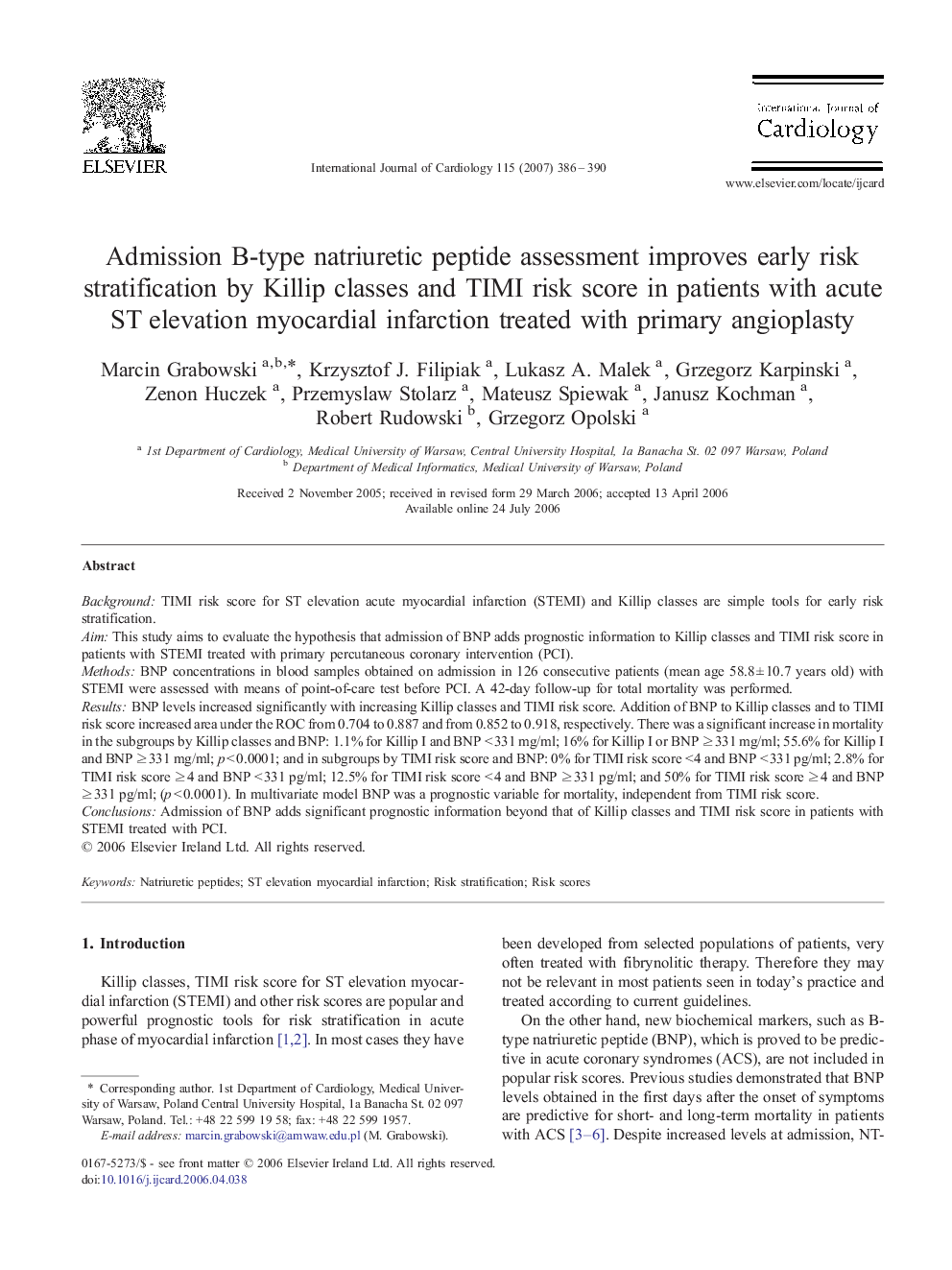| Article ID | Journal | Published Year | Pages | File Type |
|---|---|---|---|---|
| 2935367 | International Journal of Cardiology | 2007 | 5 Pages |
BackgroundTIMI risk score for ST elevation acute myocardial infarction (STEMI) and Killip classes are simple tools for early risk stratification.AimThis study aims to evaluate the hypothesis that admission of BNP adds prognostic information to Killip classes and TIMI risk score in patients with STEMI treated with primary percutaneous coronary intervention (PCI).MethodsBNP concentrations in blood samples obtained on admission in 126 consecutive patients (mean age 58.8 ± 10.7 years old) with STEMI were assessed with means of point-of-care test before PCI. A 42-day follow-up for total mortality was performed.ResultsBNP levels increased significantly with increasing Killip classes and TIMI risk score. Addition of BNP to Killip classes and to TIMI risk score increased area under the ROC from 0.704 to 0.887 and from 0.852 to 0.918, respectively. There was a significant increase in mortality in the subgroups by Killip classes and BNP: 1.1% for Killip I and BNP < 331 mg/ml; 16% for Killip I or BNP ≥ 331 mg/ml; 55.6% for Killip I and BNP ≥ 331 mg/ml; p < 0.0001; and in subgroups by TIMI risk score and BNP: 0% for TIMI risk score < 4 and BNP < 331 pg/ml; 2.8% for TIMI risk score ≥ 4 and BNP < 331 pg/ml; 12.5% for TIMI risk score < 4 and BNP ≥ 331 pg/ml; and 50% for TIMI risk score ≥ 4 and BNP ≥ 331 pg/ml; (p < 0.0001). In multivariate model BNP was a prognostic variable for mortality, independent from TIMI risk score.ConclusionsAdmission of BNP adds significant prognostic information beyond that of Killip classes and TIMI risk score in patients with STEMI treated with PCI.
